-
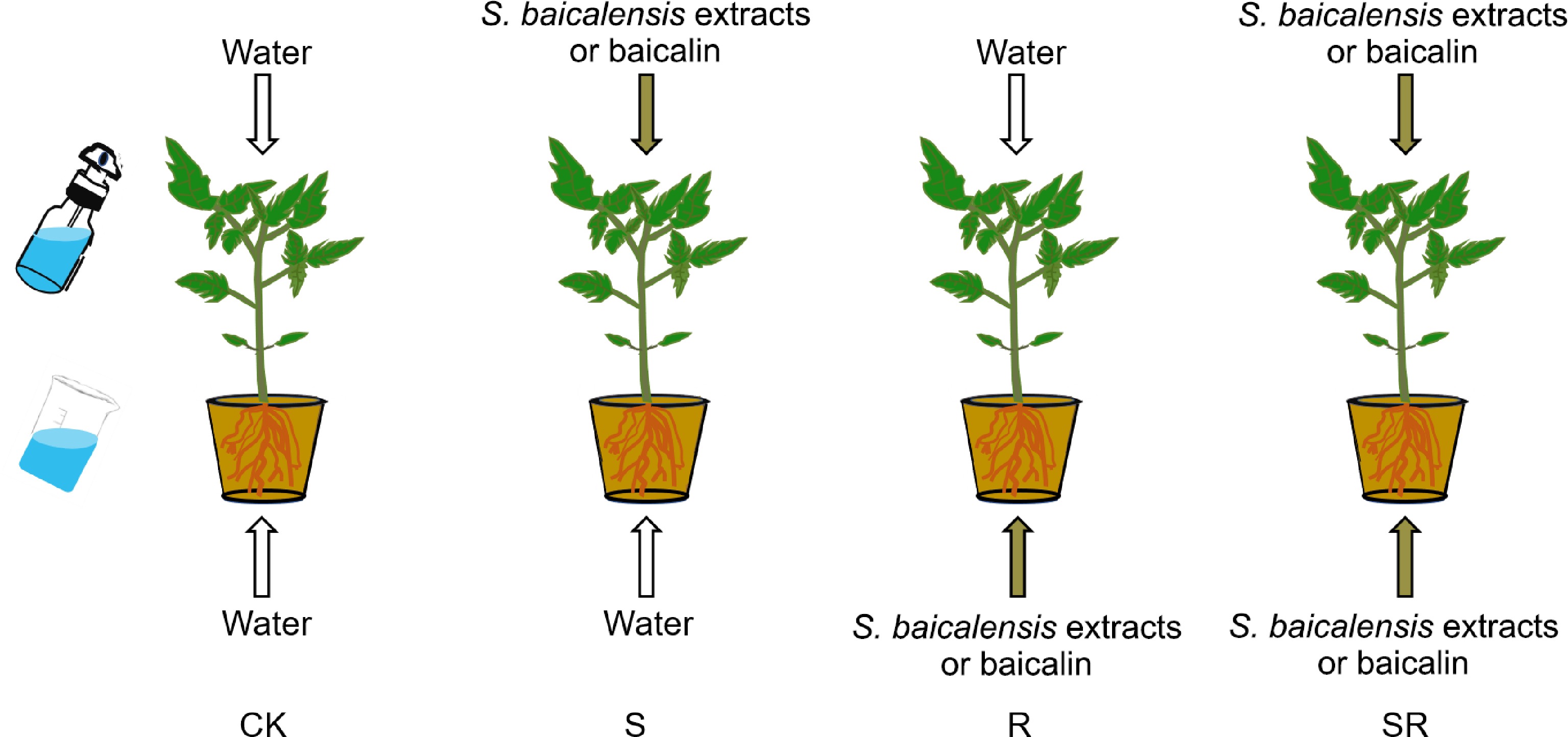
Figure 1.
Four treatment modes were performed as follows: (1) CK: spraying water on leaves and irrigating water on roots. (2) S: spraying S. baicalensis extracts or baicalin on leaves and irrigating water on roots. (3) R: spraying water on leaves and irrigating S. baicalensis extracts or baicalin on roots. (4) SR: spraying S. baicalensis extracts or baicalin on leaves and irrigating S. baicalensis extracts or baicalin on roots. In this study, CK was the control group.
-

Figure 2.
Mass spectrometry analysis showed that baicalin was the main active ingredient in S. baicalensis extract. (a), (b) Direct infused baicalin standard was used to optimize compound-dependent MS/MS parameters and create a multiple reaction monitoring (MRM) method on LC-MS/MS. (c) The predominant active compound in S. baicalensis extract was confirmed to be baicalin. The two large peaks at 3.97 min and 4.67 min were isomers of baicalin.
-
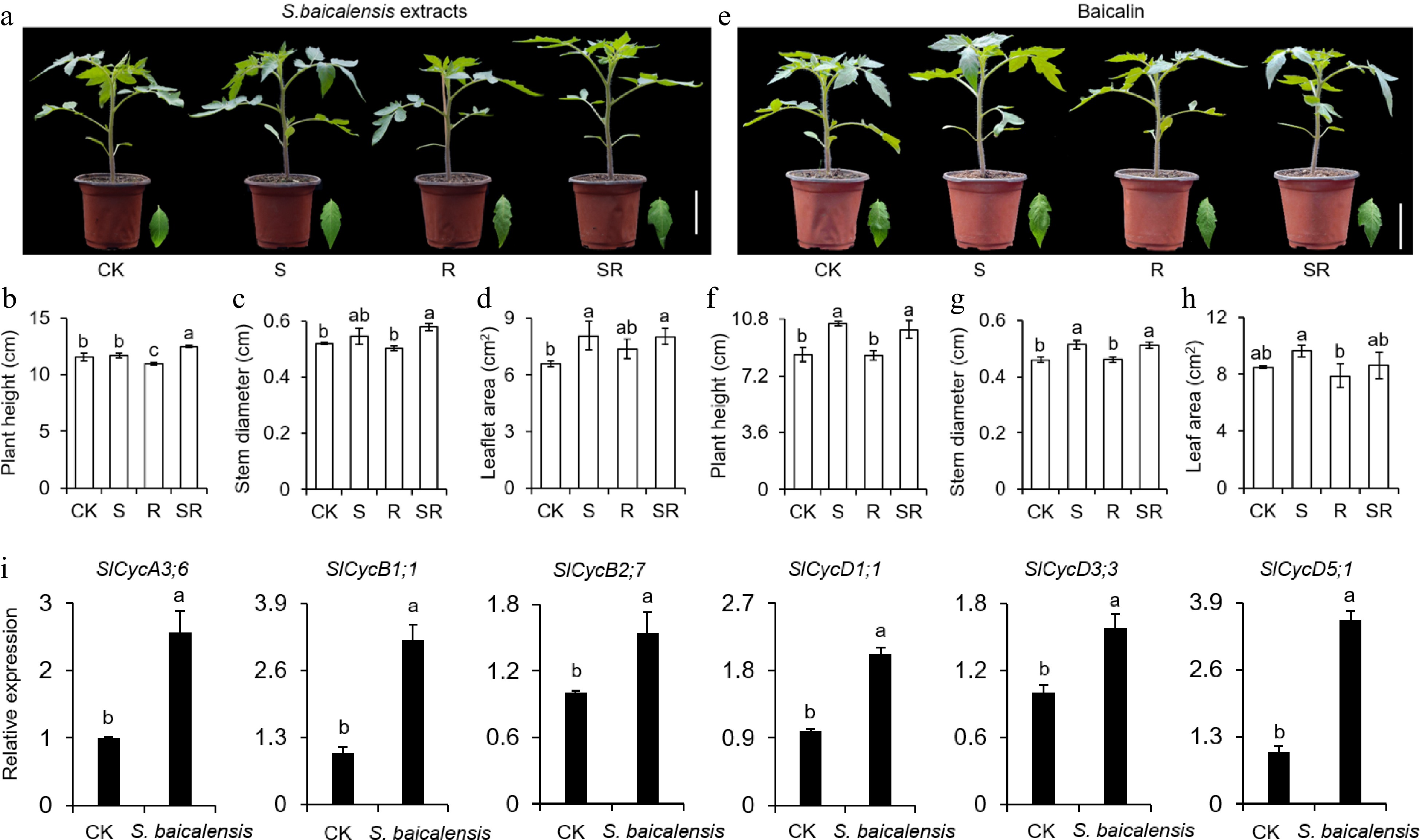
Figure 3.
Scutellaria baicalensis Georgi (S. baicalensis) extracts and baicalin affect height, stem diameter and leaflet size of tomato seedlings after treatments. (a), (e) Morphology of tomato seedlings after application of S. baicalensis extracts and baicalin. Scale bar = 5 cm. Treatments: Water control (CK), Spray (S), Root irrigation (R) and Spray and root irrigation (SR). (b), (f) Tomato plant height after application of S. baicalensis extracts and baicalin. (c), (g) Tomato stem diameter after application of S. baicalensis extracts and baicalin. (d), (h) Tomato leaflet size after application of S. baicalensis extracts and baicalin. (i) Analysis of cyclin genes expression in stems of tomato seedings treated with S. baicalensis extracts. Results are shown as means ± SD (n = 6). Values marked with the same letter within a sampling date are not significantly different at p < 0.05 according to Duncan's new multiple-range test.
-
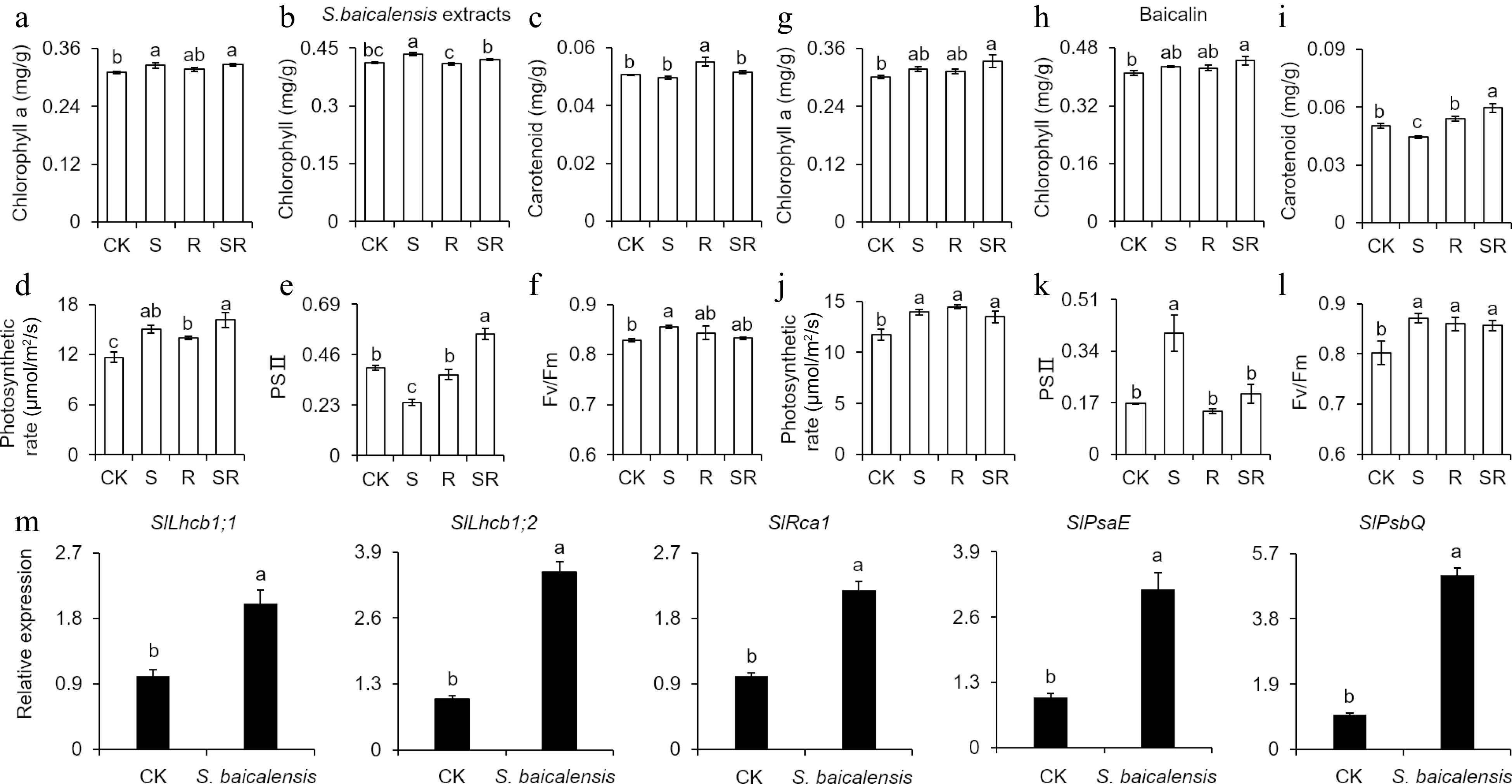
Figure 4.
Leaf chlorophyll content and photosynthetic rates of tomato seedlings in response to Scutellaria baicalensis Georgi extracts and baicalin treatments. (a), (g) Leaf chlorophyll a contents of tomato seedlings after application of S. baicalensis extracts and baicalin. (b), (h) Leaf chlorophyll contents of tomato seedlings after application of S. baicalensis extracts and baicalin. (c), (i) Leaf carotenoid contents of tomato seedlings after application of S. baicalensis extracts and baicalin. (d), (j) Photosynthetic rates of tomato seedlings after application of S. baicalensis extracts and baicalin. (e), (k) Actual quantum efficiency (PSII) of tomato seedlings after application of S. baicalensis extracts and baicalin. (f), (l) Maximum quantum efficiency (Fv/Fm) of tomato seedlings after application of S. baicalensis extracts and baicalin. (m) Expression of the photosynthesis-related genes in the CK and tomato seedings treated with S. baicalensis extracts. Results are shown as means ± SD (n = 6). Values marked with the same letter within a sampling date are not significantly different at p < 0.05 according to Duncan's new multiple-range test.
-
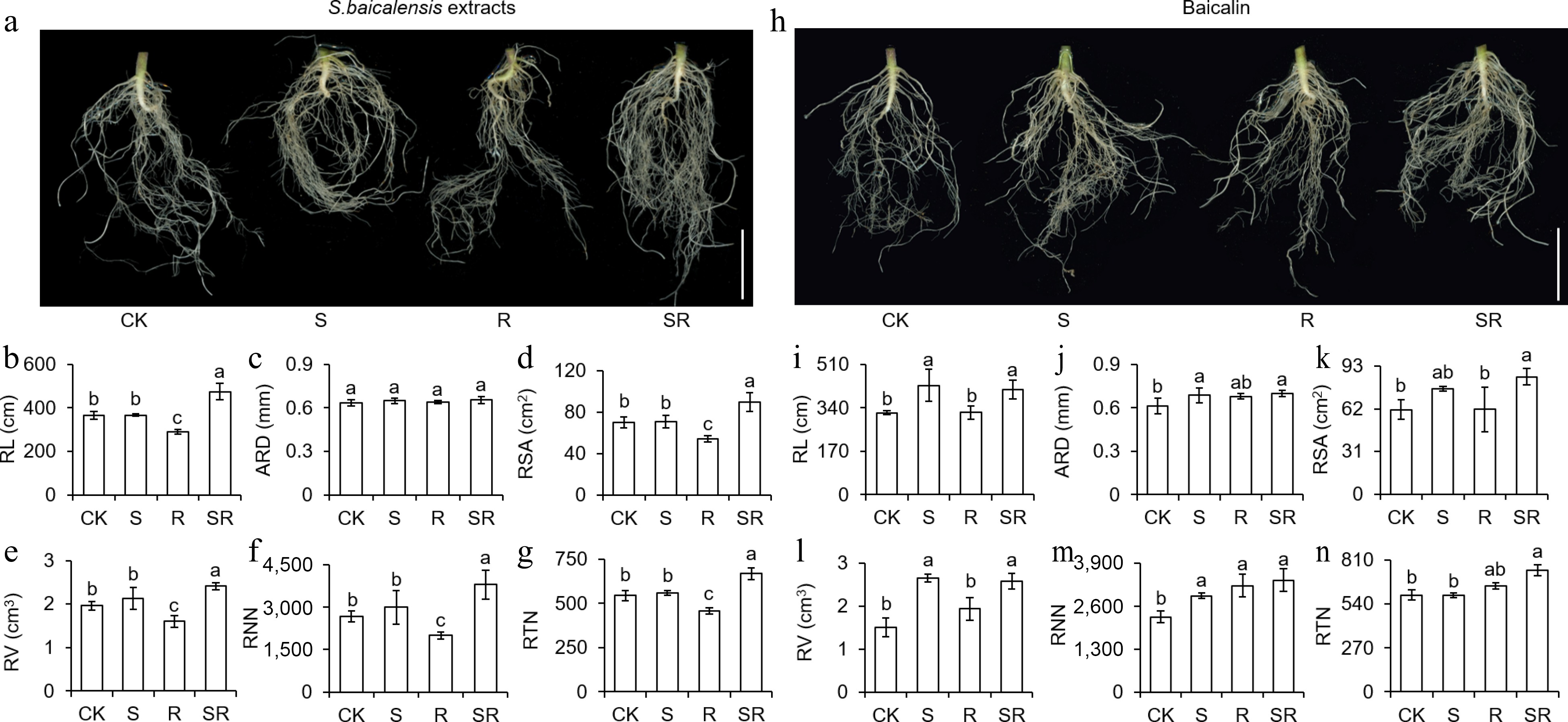
Figure 5.
Scutellaria baicalensis Georgi extracts and baicalin affect root physiological indicators after treatments. (a), (h) Morphology of tomato seedling roots after application of S. baicalensis extracts and baicalin. Scale bar = 2.5 cm. Total root length (RL), average root diameter (ARD), root surface area (RSA), root volume (RV), root node number (RNN) and root tip number (RTN) were measured after (b)−(g) application of S. baicalensis extract and (i)−(n) baicalin via WINRHIZO multi-parameter plant root analysis system. Results are shown as means ± SD (n = 6). Values marked with the same letter within a sampling date are not significantly different at p < 0.05 according to Duncan's new multiple-range test.
-

Figure 6.
Scutellaria baicalensis Georgi extracts and baicalin affect the aboveground and underground tissue dry weight of tomato seedlings. (a), (c) Dry weight (DW) of tomato aboveground tissues after S. baicalensis extracts and baicalin treatments. (b), (d) DW of tomato underground tissues after S. baicalensis extracts and baicalin treatments. Results are shown as means ± SD (n = 6). Values marked with the same letter within a sampling date are not significantly different at p < 0.05 according to Duncan's new multiple-range test.
-
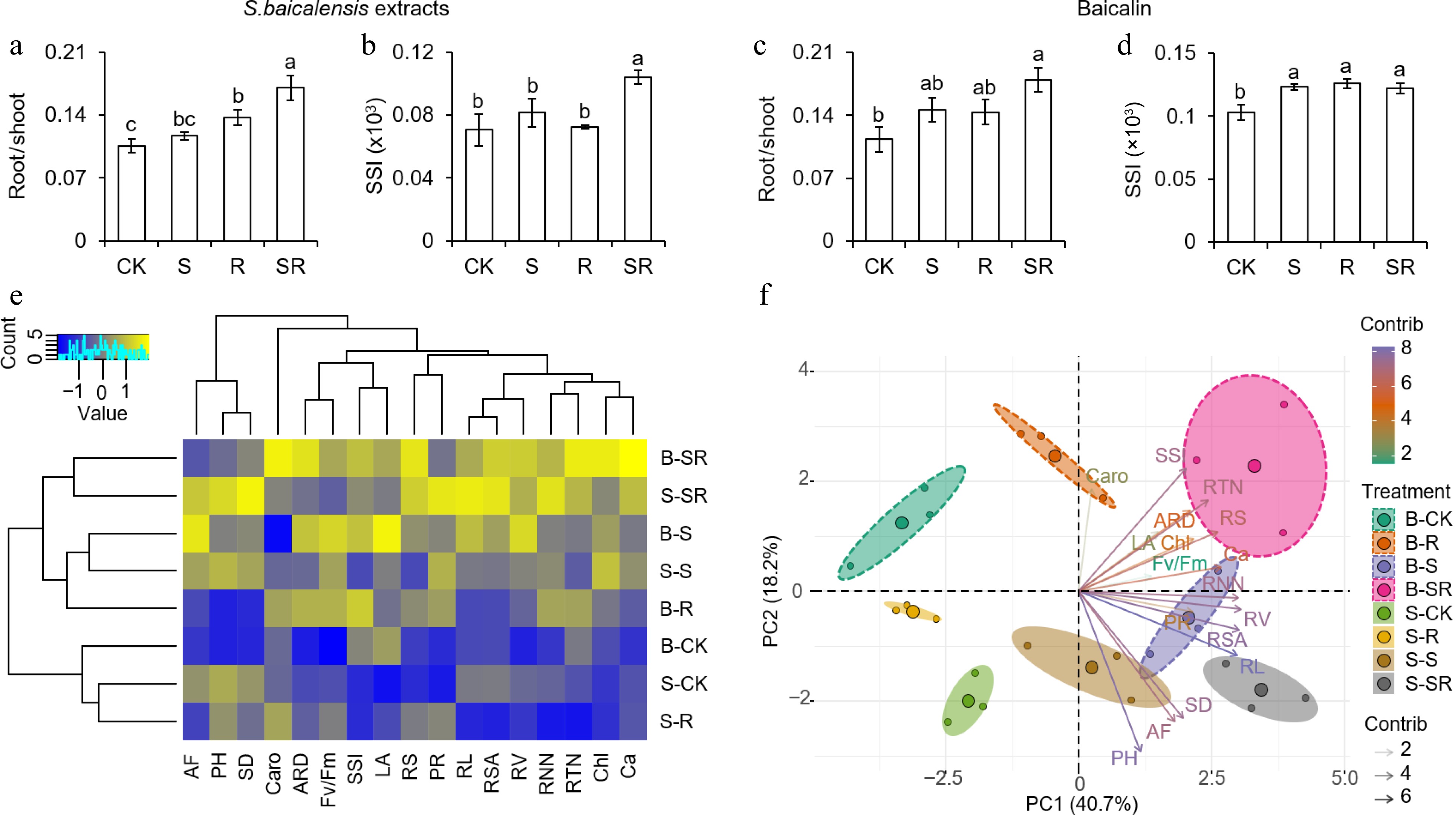
Figure 7.
Effects of different treatments of S. baicalensis extracts and baicalin on physiological data of tomato seedlings. (a), (b) The root: shoot ratio and strong seedling index (SSI) of tomato seedlings after application of S. baicalensis extracts. (c), (d) The root: shoot ratio and SSI of tomato seedlings after application of baicalin. Results are shown as means ± SD (n = 6). Values marked with the same letter within a sampling date are not significantly different at p < 0.05 according to Duncan's new multiple-range test. (e) Clustering analysis and (f) principal component analysis were used to analyze physiological indicators related to tomato seedling development. AF, aboveground fresh weight; PH, plant height; SD, Stem diameter; Caro, carotenoid content; ARD, average root diameter; SSI, strong seedling index; LA, leaflet area; RS, root: shoot ratio; PR, photosynthetic rate; RL, root length; RSA, root surface area; RV, root volume; Chl, chlorophyll content; Ca, chlorophyll a. B and S represent baicalin and S. baicalensis, respectively. Baicalin treating is marked using dotted lines. R programming was used for data analysis.
-
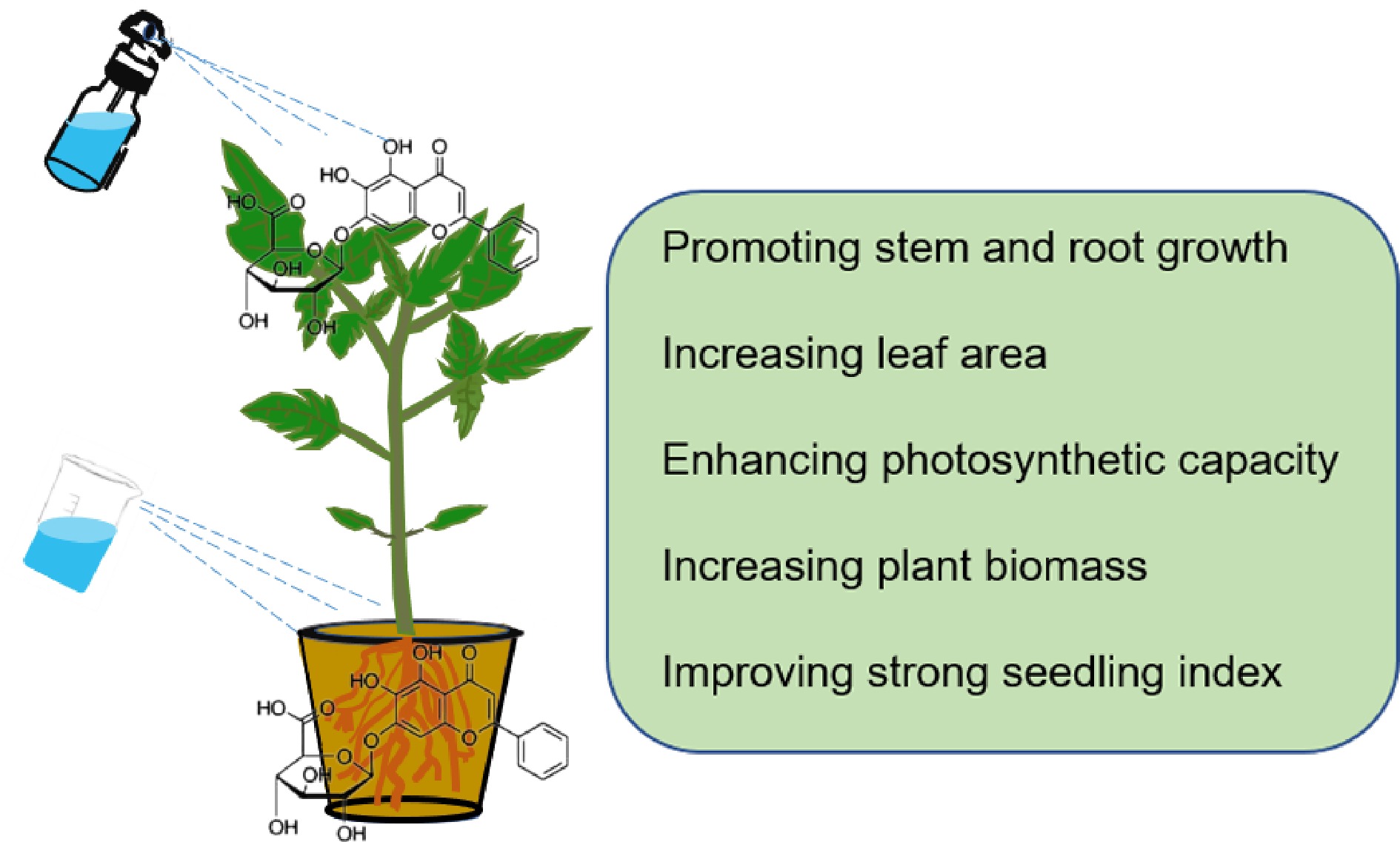
Figure 8.
Schematic illustration of a proposed model showing effects of S. baicalensis extracts and baicalin on growth and development of tomato seedlings.
Figures
(8)
Tables
(0)